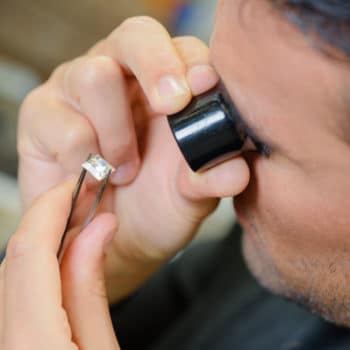Why We Love It
-
$40,970Potential Avg. Salary
-
8.4%Job Growth Rate
-
Growing DemandJob Outlook
-
Flexible HoursCareer Attribute
Pilates instructors lead classes of students in Pilates exercise routines. Pilates is a branded system of exercise that focuses on strengthening the body’s core, rehabilitating from injuries, and increasing flexibility over developing large muscles. Pilates instructors teach the concepts of Pilates to students.
Recommended Schools
What is a Pilates Instructor?
The following job responsibilities are common for individuals in Pilates instructor roles:
- Lead Pilates courses for groups of students at varying skill levels and with different needs
- Lead courses using a Pilates mat, stability ball, resistance bands, the Trapeze Table, or the Reformer
- Create routines and exercise programs that cater to specific needs using more than 500 different Pilates exercises and positions
- Conduct individual Pilates instruction for individuals who are rehabilitating from an injury
- Market services to grow class enrollments and acquire new clients
A Day in the Life
Pilates instructors lead classes and offer individualized instruction in the Pilates style. Pilates is an exercise form that was invented by Joseph Pilates in the early 20th century. In many ways, it’s a derivative of yoga that’s focused on building a body’s core, emphasizing flexibility over muscles, and holding poses over repetitions. Pilates offers more than 500 different exercises and forms using a variety of equipment, and instructors use these forms and equipment to create and teach Pilates routines.
Depending on the level of the courses they teach and the certifications they hold, Pilates instructors may use a variety of equipment in their routines. The basic equipment needed for Pilates is a mat, but stability balls, resistance bands, and specialized equipment like the Chair and Barrels and the Reformer are also employed. While the majority of Pilates instructors teach large classes at introductory, intermediate, and advanced levels, some also teach Pilates individually, working to rehabilitate injuries.
Pilates instructors may teach classes at studios, fitness centers, and gyms on a freelance basis, or they may own their own studios. Pilates instructors who are self-employed must market their services in addition to teaching classes, increasing enrollments and acquiring new clients. Additionally, those who work in gyms may also have front desk and membership enrollment responsibilities: they greet patrons, help with membership applications, and provide tours of the facility for those interested in joining.
Typical Work Schedule
Pilates instructors may work either part-time or full-time schedules, and they commonly work during first shift, second shift, and on weekends when gyms and studios are the busiest.
Projected Job Growth
The practice of Pilates has been growing in popularity in the U.S. in recent years, leading to an increased demand for Pilates instructors to teach classes at fitness centers, gyms, and studios.
Typical Employers
Pilates instructors may work for gyms, fitness centers like the YMCA, and yoga or Pilates studios. Some may also teach classes at elementary or secondary schools, rehabilitation centers, or nursing homes. Many Pilates instructors are self-employed and teach classes on a freelance basis, or own and operate their own studios.
Recommended Schools
How To Become a Pilates Instructor
Becoming a Pilates instructor who can teach all aspects of the exercise program requires completion of a variety of courses. The first are two 12-hour anatomy courses that teach students that basic of human anatomy and prepares them to help students rehabilitate from injuries, as well as how to teach students to avoid injuries when engaging in Pilates exercises. In some cases, students with prior education in anatomy may be able to skip this course and move directly into Mat Pilates training.
The Pilates Mat classes teach aspiring instructors the basics of Pilates. Mat classes require 32 hours of coursework, completion of exams, and 72-hours of personal instruction. Once complete, you can begin teaching basic Pilates classes. However, you may also want to move on to earn certifications in Reformer Pilates and Comprehensive Pilates to round out your status and to expand your course offerings and skills. At the end of the program, you’ll take final written and practical exams before certification.
If you plan to open your own Pilates studios in the future, college coursework in business and marketing can also be beneficial. As a studio owner, you’ll need to be able to market your studio in the community in order to grow class enrollments and become profitable, so classes in marketing can be useful. Additionally, you’ll have tax paperwork and legal regulations to handle, and coursework in business can help you learn how to run your business efficiently and with as little risk as possible.
Pilates Instructor Salary Data
We’ve provided you the following to learn more about this career. The salary and growth data on this page comes from recently published Bureau of Labor Statistics data while the recommendations and editorial content are based on our research.
National Anual Salary
Low Range
$23,280Average
$40,970High Range
$70,180National Hourly Wage
Low Range
$11/hrAverage
$20/hrHigh Range
$34/hrHow do Pilates Instructor salaries stack up to other jobs across the country? Based on the latest jobs data nationwide, Pilates Instructor's can make an average annual salary of $40,970, or $20 per hour. This makes it an Above Average Salary. On the lower end, they can make $23,280 or $11 per hour, perhaps when just starting out or based on the state you live in.
Salary Rankings And Facts
#511 Nationally for All Careers
Highest Education Among Pilates Instructors
- 1.2% Doctorate
- 9.7% Masters
- 36.4% Bachelors
- 9.1% Associates
- 25% College
- 16.2% High School
- 2.4% Less than High School
Job Growth Projections and Forecast
2014 Total Jobs
279,1002024 Est. Jobs
302,500Job Growth Rate
8.4%Est. New Jobs
23,400How does Pilates Instructor job growth stack up to other jobs across the country? By 2024, there will be a change of 23,400 jobs for a total of 302,500 people employed in the career nationwide. This is a 8.4% change in growth over the next ten years, giving the career a growth rate nationwide of Below Average.
Growth Rankings And Facts
#264 Nationally for All Careers
What Companies Employ The Most Pilates Instructors
| Industry | Current Jobs | New Jobs Needed | % Increase |
|---|---|---|---|
| Fitness and recreational sports centers | 161,800 | 14,300 | 14% |
| Civic and social organizations | 34,000 | 400 | 0% |
| Self-employed workers | 29,500 | 2,100 | 2% |









